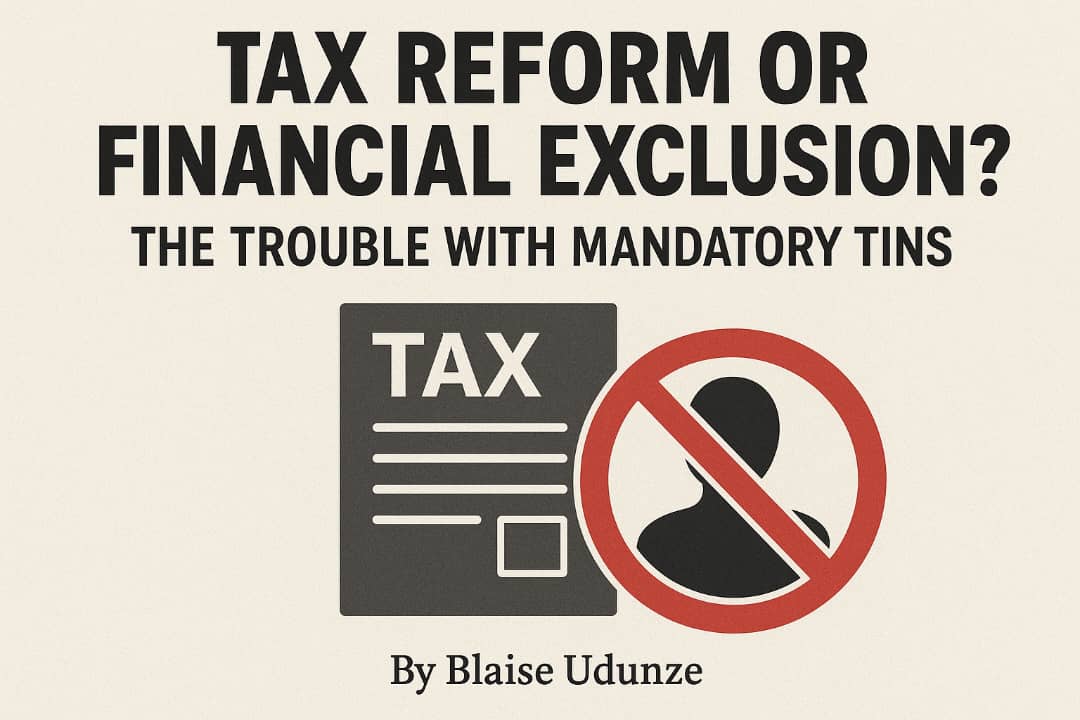Feature/OPED
SMEs: Market Entry Strategies and Applicability in a Pandemic

By Timi Olubiyi, Ph.D
The business environment is currently going through radical changes globally due to the damaging effect of the novel coronavirus (COVID19).
Therefore, to cope with this situation, businesses need to adjust and develop strategies to rise to the occasion.
A typical decision businesses’ particularly Small Medium Enterprises (SMEs) can make at the moment to achieve sustainability, and valuable competitiveness is by considering new market entry strategies.
Many firms expand their business geographic scope from domestic to nationwide or even foreign markets through this means.
With the harsh impact of COVID19 and the limitations in financial and human resources, companies can still leverage on a new market entry strategy to stem the tides.
Market entry strategy is a planned distribution and delivery method of goods or services to a new target market.
In simple terms, a market entry strategy refers to a detailed plan of how to successfully berth and run a profitable business in a new region.
Market entry strategy will help companies to assess markets’ readiness for new offerings and gain detailed insights into the new market. In short, it allows businesses to gather comprehensive insights into lucrative opportunities, industry developments, and competitive scenarios of an unknown market. This strategy makes it easier for companies to successfully establish their foothold and gain a leading edge in the new market and gain good market access.
With a market entry strategy, companies get access to important information and thus, they can increase their productivity and competitive position. It is important to note that the market entry strategy will help businesses at this time to efficiently enter new markets.
For example, a business located and operating in Ikeja, Lagos State can conduct market entry research and gather data from other states of the country (Kano, Enugu, Kwara, Osun, Rivers, Nasarawa, Taraba) or around the West Africa region (Republic of Benin, Togo, Ghana Guinea, Guinea-Bissau, Liberia, Mali, Mauritania, Niger, Senegal) or beyond for market expansion and new market entry strategy.
With adequate research to guide the decision, businesses can achieve increased sales, improved brand awareness and business sustainability with a new market strategy to gain market expansion.
The new market entry strategy, when implemented, can sustain the success of a proactive business due to the negative challenges created by the COVID-19.
In building a market entry strategy, time is a crucial factor, and consequently, in my opinion, the pandemic has provided good timing for new market entry and the opportunity for companies to expand easily.
It is much easier now for cross-border expansion or at the least expansion beyond the geographical location of business operation because governments are encouraging and supporting businesses to stabilize due to COVID-19 impact.
More so, we are likely to see policy responses to decrease trade barriers and improve globalization. Therefore considering new market entry strategy at this time is one of the most important ways for businesses to grow profitability and sustain competitive advantage.
By entering into new markets, businesses, particularly SMEs, can enjoy several benefits, including broadening their customer base and improving market share beyond the business location.
Consequently, if a domestic business is willing to go nationwide and/or across the globe with world-class products and services, the best option is through a new market strategy and the time is now.
Invariably, these following benefits can be achieved: economies of scale, earning foreign currency, gaining global customers, increasing brand awareness and improving market share.
Further to this, it is important to state that the ease of entry into a new market is characterised by the available financial resources, the ownership structure, managerial styles and managerial resources of the domestic businesses.
However, the relevant factors that must be considered when deciding the viability of entry into a particular market include trade barriers, customer preference, pricing, competition, and export guidelines and restrictions.
The liability of newness is another hindrance, as a new business in a new market could encounter difficulties, and this can lead to increased risk, as there is usually a lack of legitimacy in any new market.
For this reason, vigorous brand awareness and advertainment need to be accounted in other to legitimizing the business in a new market.
Significantly, the entry mode choice is one of the most important decisions a business has to make in the effort of new market entry strategy because it determines the number of resources to be committed.
Therefore, businesses have to find an entry mode that allows them to deal effectively with the risks that arise in the target destination.
There is no one specific mode of entry an organization can adopt to enter into a new market or go internationally. Businesses can consider some of the most common market entry modes, which are: directly by the setting up of an entity in the new market, directly exporting products to the new market, indirectly exporting using a reseller or distributor, and producing products in the target market.
The most common modes, however, to go into a foreign market entry are licensing, joint venture, partnering and strategic alliances, acquisitions, exporting or establishing new, wholly-owned subsidiaries, also known as greenfield ventures.
For SMEs, the option is usually to start transferring/exporting via an agent or a foreign representative. This option is a non-equity mode that requires fewer resources and provides flexibility, but the target market knowledge may be lacking.
| Entry Mode | Profile | Benefit | |
| Exporting/trasferring | Fast-entry, low risk | Low control, low local knowledge, the potential negative environmental impact of transportation is high | |
| Licensing and Franchising | Fast-entry, low cost, low risk | Less control, the licensee may become a competitor, legal and regulatory environment (IP and contract law) must be sound | |
| Partnering and Strategic Alliance | Shared costs reduce investment needed, reduced risk, seen as the local entity | Higher cost than exporting, licensing, or franchising; integration problems between two corporate cultures | |
| Acquisition | Fast-entry; known, established operations | High cost, integration issues with home office | |
| Greenfield Venture (Launch of a new, wholly-owned subsidiary) | Gain local market knowledge; can be seen as an insider who employs locals; maximum control | High cost, high risk due to unknowns, slow entry due to setup time |
Each mode of market entry has advantages and disadvantages. Firms need to evaluate their options to choose the entry mode that best suits their strategy and goals.
Significantly, the mode of entry is a crucial factor to be considered for a business entity to be successful in a new market.
However, all the modes of market entry involve resource commitments of some kind. Because entering the market properly is one of the most important steps a business must consider.
From context observation, business expansion starts with the movement of goods and services to neighbouring states or countries that are close to business facilities. This is usually because of the lower transportation costs involved and the often greater similarity between geographic neighbours.
To be effective and successful, with new market entry strategy, businesses need to support the decision with a well-thought-out plan. One that is based on the analysis of potential competitors, understanding of the focus market environment and its inner workings, the regulatory expectations, consumer behaviour, and possible customer base, among other key factors.
A typical market entry strategy can take a few months to implement due to intensive preparation. However, it worths the effort because it will reduce business failure risk. It will also ensure an informed decision on the launch of the right product or services that align with the expectations of the customers.
More so, with new market entry strategy, adequate attention should be paid to the political and institutional environment of the target market, where businesses are likely to encounter different market conditions different from the home market.
That said, the context of digitalization has evolved over the last years and pushed further communication technologies much easier, such as the internet and mobile telecommunication. Therefore, digitalization can also be leveraged upon when considering the market entry options.
Besides the impact of the COVID-19 on businesses globally has encouraged the effective use of technological innovations. Innovation in the context of this article can be defined as ‘the introduction of something new that positively impacts businesses and mankind in meaningful and contextually specific ways.
Therefore, introducing new market entry modes to business operations at this time might just be the innovative move required to stem the impact of the pandemic on business operations. By so doing, market innovativeness, behavioural innovativeness, and strategic innovativeness would have been achieved. This will greatly improve the performance, market expansion and logistics method of businesses.
To have a winning market entry strategy plan, businesses need to set clear goals, study the target market and the competition, know the customer needs and preference.
Extant literature suggests barriers of entry to new markets, particularly foreign markets to include lack of financial, physical or technological resources; the lack of opportunities and insufficiency of managerial skills.
Another is inadequate useful information to analyse the target market and also identify business opportunities. It has also been observed that a strong brand identity or customer loyalty, and high customer switching costs can be barriers of entry to new markets.
Others include the need for new companies to obtain proper licenses or regulatory clearance before the operation. Some of the risks incurred when entering a new market and start domestic or international trade include weather risk, foreign exchange risk, and cultural risk
While the idea of entering a new market might seem viable on paper, when put to practice, organizations are challenged by several uncertainties and barriers aforementioned.
Though some companies prefer to develop their market entry plans, other outsource to specialized individuals or companies.
The engagement of knowledgeable professionals can mitigate trade risk in the target market and also improve the chances of discovering adequate market opportunities. Good luck!
How may you obtain advice or further information on the article?
Dr. Timi Olubiyi is an Entrepreneurship and Small Business Management expert. He is a prolific investment coach, Chartered Member of the Chartered Institute for Securities & Investment (CISI), and a financial literacy specialist. He can be reached on the twitter handle @drtimiolubiyi and via email: [email protected], for any questions, reactions, and comments.
Feature/OPED
Why Africa Requires Homegrown Trade Finance to Boost Economic Integration

By Cyprian Rono
Africa’s quest to trade with itself has never been more urgent. With the African Continental Free Trade Area (AfCFTA) gaining momentum, governments are working to deepen intra-African commerce. The idea of “One African Market” is no longer aspirational; it is emerging as a strategic pathway for economic growth, job creation, and industrial competitiveness. Yet even as infrastructure and regulatory reforms advance, one fundamental question remains; how will Africa finance its cross-border trade, across markets with diverse currencies, regulations, and standards?
Today, only 15 to 18 percent of Africa’s internal trade happens within the continent, compared to 68 percent in Europe and 59 percent in Asia. Closing this gap is essential if AfCFTA is to deliver prosperity to Africa’s 1.3 billion people.
A major constraint is the continent’s huge trade finance deficit, which exceeds USD 81 billion annually, according to the African Development Bank. Small and medium-sized enterprises (SMEs), which provide more than 80 percent of the continent’s jobs, are the most affected. Many struggle with insufficient collateral, stringent risk profiling and compliance requirements that mirror international banking standards rather than the realities of African business.
To build integrated value chains, exporters and importers must operate within trusted, predictable, and interconnected financial systems. This requires strong pan-African financial institutions with both local knowledge and continental reach.
Homegrown trade finance is therefore indispensable. Pan-African banks combine deep domestic roots with extensive regional reach, making them the most credible engines for financing trade integration. By retaining financial activity within the continent, homegrown lenders reduce exposure to external shocks and keep liquidity circulating locally. They also strengthen existing regional payment infrastructure such as the Pan-African Payment and Settlement System (PAPSS), developed by the Africa Export-Import Bank (Afreximbank) and backed by the African Continental Free Trade Area (AfCFTA) Secretariat, enabling faster, cheaper and seamless cross-border payments across the continent.
Digital transformation amplifies this advantage. Real-time payments, seamless Know-Your-Customer (KYC) verification, automated credit scoring and consistent service delivery across markets are essential for intra-African trade. Institutions such as Ecobank, operating in 34 African countries with integrated core banking systems, demonstrate how such digital ecosystems can enable continent-wide commerce.
Platforms such as Ecobank’s Omni, Rapidtransfer and RapidCollect, together with digital account-opening services, make it much easier for traders to operate across borders. Rapidtransfer enables instant, secure payments across Ecobank’s 34-country network, reducing delays in regional trade, while RapidCollect gives cross-border enterprises the ability to receive payments from multiple African countries into a single account with real-time confirmation and automated reconciliation. Together, these solutions create an integrated digital ecosystem that lowers friction, accelerates payments, and strengthens intra-African commerce.
Trust, however, remains a significant barrier. Cross-border commerce depends on the confidence that partners will honour contracts, deliver goods as promised, pay on time, and present authentic documentation. Traders often lack reliable information on potential partners, operate under different regulatory regimes, and exchange documents that are difficult to verify across borders. This heightens the risk of fraud, non-payment, and contractual disputes, discouraging businesss from expanding beyond familiar markets.
Technology is closing this trust gap. Artificial Intelligence enables lenders to assess risk using alternative data for SMEs without formal credit histories. Distributed ledger tools make shipping documents, certificates of origin, and inspection reports tamper-proof. In addition, supply-chain visibility platforms enable real-time tracking of goods and cross-border digital KYC ensures that both buyers and sellers are verified before any transaction occurs.
Ecobank’s Single Trade Hub embodies this trust infrastructure by offering a secure digital marketplace where buyers and sellers can trade with confidence, even in markets where no prior relationships exist. The platform’s Trade Intelligence suite provides customers instant access to market data from customs information and product classification tools across 133 countries.
Through its unique features such as the classification of best import/export markets, over 25,000 market and industry reports, customs duty calculators, and local and universal customs classification codes, businesses can accurately assess market opportunities, anticipate trends, reduce compliance risks, and optimise supply chains, ultimately helping them compete and grow in regional and global markets.
SMEs need more than financing. Many operate in cash-heavy cycles where suppliers and logistics providers require upfront payment. Lenders can support these businesses with advisory services, business intelligence, compliance guidance, and platforms for secure partner verification, contract negotiation, and secure settlement of payments. Trade fairs, industry forums, and partnerships with chambers of commerce further build the trust networks needed for cross-border trade.
Ultimately, Africa’s path toward meaningful trade integration begins with financial integration. AfCFTA’s promise will only be realised when enterprises can trade with confidence, knowing that payments will be honoured, partners verified, and disputes resolved. This requires collaboration between banks, regulators, and trade institutions, alongside harmonised financial regulations, interoperable payment systems, and continent-wide verification networks.
Africa can no longer rely on external actors to finance its trade. Its economic transformation depends on strong, trusted, and digitally enabled African financial institutions that understand Africa’s unique risks and opportunities. By building an African-led trade finance ecosystem, the continent can unlock liquidity, reduce dependence on external currencies, empower SMEs, and retain more value locally. Africa’s trade revolution will accelerate when its financing is driven by African institutions, African systems, and African ambition.
Cyprian Rono is the Director of Corporate and Investment Banking for Kenya and EAC at Ecobank Kenya
Feature/OPED
Tax Reform or Financial Exclusion? The Trouble with Mandatory TINs

By Blaise Udunze
It is not only questionable but an aberration that a nation where over 38million Nigerians remain financially excluded, where trust in institutions is fragile, and where citizens are pressured under the weight of rising living costs, the use of Tax Identification Number (TIN) has been specified as the only option for their bank accounts operation from January 1, 2026 by the Federal Government of Nigeria.
In practice, the policy spearheaded by Taiwo Oyedele, Chairman of the Presidential Committee on Fiscal Policy and Tax Reforms, is rooted in the Nigerian Tax Administration Act (NTAA), and the intention can be understood in the areas of improving tax compliance, widening the tax net, and formalizing economic activities. But in practice, the directive risks becoming yet another well-meaning reform that punishes the wrong people, disrupts financial inclusiveness, and potentially destabilises an already stressed economy.
Yes, Nigeria needs tax reforms. Yes, the country must broaden its tax base. And yes, public revenues must increase to address fiscal pressures.
But compelling citizens to obtain TINs as a condition for operating bank accounts is the wrong tool for the right objective.
Below are five core arguments against the directive, and sustainable alternatives that actually strengthen tax compliance without endangering banking access or punishing informal earners.
The Directive Risks Deepening Financial Exclusion
Nigeria still struggles with financial inclusion. According to several official assessments, over 38 million adults remain outside the formal financial system. Many of them operate small, irregular businesses, survive through subsistence earnings, or depend on cash-based livelihoods.
The Federal Government’s compulsory TIN-for-bank-accounts policy is built on the assumption that every banked Nigerian is structured, organised, and tax-ready. This is false.
For instance, the rural market woman with N30,000 in rotating savings, the okada rider who deposits cash once a week, the petty trader using a mobile POS agent account, the retiring pensioner managing a small monthly income, and the migrant worker sends small remittances to their family. These are not tax evaders; they are survivalists.
Most operate bank accounts not because they run formal businesses, but because those accounts are essential to modern financial life: receiving transfers, accessing loans, participating in digital commerce, saving against emergencies, and avoiding the risks of moving cash in insecure environments.
By creating an additional bureaucratic barrier, the directive risks pushing millions back into a cash-dominant shadow economy, precisely the opposite outcome of what Nigeria’s financial-sector reforms are trying to achieve.
Bank Accounts Are Not Proof of Taxable Income
The NTAA clarifies that the TIN requirement applies only to taxable persons, individuals engaged in trade, employment, or income-generating activities.
But herein lies the problem: banks cannot determine who is “taxable” and who is not. Banks only see deposits and withdrawals. They do not audit the source or consistency of income. They are not tax authorities.
A student may run a small online clothing resale gig. A retiree may occasionally rent out farmland.
A dependent may receive cash support from a relative abroad. A job seeker may get intermittent gifts from family.
Who decides which of these scenarios qualifies as taxable? Banks? FIRS? Or will citizens be expected to self-declare under threat of account restrictions?
The result will be confusion, over-compliance, and mass panic with banks indiscriminately demanding TINs from everyone to avoid regulatory penalties.
This not only contradicts the spirit of the law but also exposes ordinary Nigerians to harassment and arbitrary compliance requirements.
The Policy Could Trigger Disruption, Panic Withdrawals, and Cash Hoarding
Whenever Nigerians perceive threats to their access to funds, the natural reaction is withdrawal and hoarding. We saw it during:
– the 2023 Naira redesign crisis,
– the 2016 TSA-bank consolidation tightening, and multiple periods of financial instability.
Telling citizens that bank accounts may face “operational restrictions” if they do not obtain a TIN creates a predictable behavioural response: people will rush to withdraw money.
This would be disastrous for a banking system already pressured by:
– high interest rates,
– inflation eroding deposits,
– rising loan defaults, and
– declining public trust.
Any government policy that unintentionally creates an incentive for citizens to flee the formal banking system is counterproductive.
The TIN Requirement Will Become a Bureaucratic Nightmare
Even if millions of Nigerians want to comply, the system is not ready. Nigeria’s administrative infrastructure does not have the capacity to process tens of millions of TIN registrations within months without:
– long queues,
– delays,
– data mismatches,
– duplicate records, and
– systemic errors.
The National Identity Number (NIN)-SIM registration experience is a painful reminder of what happens when ambitious policy meets weak execution capacity.
– Citizens spent months in overcrowded enrolment centres.
– Millions were blocked from services.
– Data inconsistencies persisted.
– The economy suffered productivity losses.
If Nigeria could not seamlessly synchronise NIN and SIM data, how will it synchronise NIN, BVN, and TIN at a national scale without dislocation?
Forcing TIN Adoption Ignores the Real Problem: Nigeria’s Broken Tax Culture
The Federal Government’s real challenge is not that citizens lack TINs, but that they lack trust in how taxes are used.
A government cannot widen the tax net when:
– tax leakages remain widespread,
– citizens feel services do not match taxation,
– corruption perceptions are high,
– government spending lacks transparency, and
– taxpayers do not feel seen, heard, or valued.
Coercion does not build a tax culture. Engagement does. Policy does not create legitimacy. Accountability does.
If the Federal Government wants Nigerians to freely participate in the tax system, it must earn legitimacy first, not mandate compliance through financial restrictions.
What the Government Should Do Instead: A Smarter Path to Tax Reform
Instead of enforcing a policy that may backfire economically and socially, the Federal Government can adopt four smarter, people-centred alternatives.
– Automatic TIN Issuance Linked to NIN and BVN
Rather than forcing Nigerians to apply manually, the government should:
- auto-generate TINs for all existing BVN/NIN holders,
- send the TINs via SMS, email, and bank alerts,
- allow self-activation only when needed for tax obligations.
This eliminates queues, delays, and confusion.
– Build a Voluntary Tax Compliance Culture Through Transparency and Incentives
Tax morale improves when citizens see value. Government should:
- publish annual audited reports of tax revenue use,
- incentivise compliant taxpayers with benefits (priority access to government grants, credit scoring, etc.),
- simplify tax filings for small businesses.
People comply more when they feel respected, not coerced.
– Target High-Value Tax Evaders, Not Low-Income Account Holders
Nigeria’s real tax leakages come from:
- large corporations shifting profits,
- politically exposed persons,
- illicit financial flows,
- multinational tax avoidance strategies,
- the informal “big money” class operating outside the banking system.
Instead of threatening small depositors, the government should strengthen:
- FIRS intelligence and investigation units,
- inter-agency data integration (CAC, Customs, Immigration),
- beneficial ownership transparency enforcement.
The fight against tax evasion should focus on those hiding billions, not those depositing thousands.
– Strengthen Digital Tax Platforms for Easy Self-Registration and Compliance
If tax registration becomes as easy as opening a social media account, compliance will rise naturally. The government should build:
- a mobile-first tax app,
- simplified online TIN retrieval,
- one-click tax filing for gig workers and small traders.
Digital convenience can achieve what regulatory coercion cannot.
Reform Should Not Punish the Public
No doubt, tax reforms are needed urgently, but they must come with a human face, an intelligent, equitable, and aligned with the realities of ordinary Nigerians.
The TIN-for-bank-accounts policy, while well-intentioned, risks undermining financial inclusion, triggering economic instability, and imposing unnecessary burdens on millions who are not tax evaders but survival-based earners.
Good tax policy is built on trust, not fear. On transparency, not threats. On civic legitimacy, not administrative compulsion.
If the Federal Government truly wants to modernise Nigeria’s tax system, it must focus not on restricting citizens’ access to their own money, but on:
- repairing tax trust,
- digitising compliance,
- targeting the real evaders, and
- making participation easier, not harder.
Financial inclusion took Nigeria decades to build. We cannot afford a policy that carelessly reverses these gains.
A better tax system is possible, but it must start with the people, not with their bank accounts.
Blaise, a journalist and PR professional, writes from Lagos, can be reached via: [email protected]
Feature/OPED
Dangote and Farouk: The Distance Between Capital and Conscience

By Abiodun Alade
Within the space of 48 hours, Aliko Dangote offered Nigeria a rare demonstration of what leadership looks like when power is exercised with responsibility and consequence.
First came the announcement of a N100 billion annual education support programme — a decade-long N1 trillion commitment projected to keep more than 1.3 million Nigerian children in school. Its architecture was intentional, not ornamental: girls’ education, STEM disciplines, technical skills, and those children most likely to disappear quietly into the margins of poverty were placed at the centre, not the footnotes.
Then, almost immediately, his refinery reduced the price of Premium Motor Spirit by over N100 per litre. This was not achieved through government fiat, subsidy or public funds, but through internal cost absorption, aimed at easing the pressure of inflation on households, transport operators and small businesses already stretched thin.
Two decisive interventions. One individual. Forty-eight hours.
In a country where scarcity has been normalised and excuses institutionalised; these actions stand out precisely because they are uncommon. Nigeria does not lack wealth. It lacks the nerve to use it responsibly.
Dangote’s interventions were not symbolic gestures designed for applause. They were structural acts. Education secures the future. Affordable energy steadies the present. Together, they form the foundation of any serious development strategy.
Now set this against the performance of Nigeria’s downstream petroleum regulation.
Engr Farouk Ahmed, Chief Executive of the Nigerian Midstream and Downstream Petroleum Regulatory Authority (NMDPRA), presides over a sector whose policy objectives are clearly stated: support domestic refining, reduce imports, conserve foreign exchange and strengthen energy security. These goals are enshrined in the Petroleum Industry Act and reinforced by the Federal Government’s Nigeria First policy.
Yet in practice, the downstream market remains crowded with import licences, uneven enforcement and regulatory decisions that continue to weaken local refining. Even with Africa’s largest refinery operating on Nigerian soil, import dependence persists — not because capacity is lacking, but because incentives remain misaligned.
This is where comparison ends.
Dangote and Farouk Ahmed do not operate on the same economic or moral plane. One commits private capital to solve national problems. The other leads a public institution whose outcomes are increasingly questioned by industry players, economists and the public alike.
One expands supply.
The other presides over a system where scarcity recurs.
One cuts prices.
The other manages a framework in which price instability has become familiar.
One reinvests personal wealth into Nigerian children.
The other reportedly expends questionable millions of dollars on secondary education abroad, while in his home state, Sokoto, thousands of children drop out of school over tuition fees as low as N10,000.
Only in Nigeria does the arithmetic of public life so often defy reason. Where official incomes are modest, lifestyles sometimes appear imperial. Where the books are thin, the living is lavish. And where questions should naturally arise, silence frequently answers instead.
It is a country where some who labour in the open marketplace live with studied moderation, while others, known only to the payroll of the state, move with a splendour their salaries cannot reasonably sustain. Children are educated across distant borders, fees quoted in foreign currencies that mock the modest figures attached to public service, yet accountability remains elusive.
When regulators falter, it is rarely for lack of laws or mandates. More often, authority is softened by comfort, dulled by compromise, and entangled in interests it was meant to police. A regulator burdened by unanswered questions cannot stand upright; oversight weakens when conscience is clouded.
In such moments, one does not need a forensic accountant to sense disorder. A soothsayer is hardly required to see where lines have blurred, where vigilance has yielded to indulgence, and where public trust has quietly been mortgaged.
This is how institutions lose their moral centre — not always through spectacular scandal, but through a series of small indulgences that mature, unnoticed, into systemic decay.
The fuel price reduction alone deserves careful attention. In Nigeria, petrol is not merely a commodity; it is the bloodstream of the economy. When prices rise, transport fares rise. Food prices rise. School attendance drops. Small businesses shut early. Families cancel travel or risk storing petrol in jerry cans — turning highways into mobile fire hazards during festive seasons.
By reducing PMS prices by over N100 per litre, the Dangote Refinery accomplished what years of policy meetings failed to deliver. It restored breathing space. It returned dignity to commuters. It reduced pressure on traders. It saved millions of productive man-hours otherwise lost to queues, panic buying and logistical paralysis.
That this occurred alongside a historic education commitment is not accidental. It reflects an understanding that energy without education builds nothing, and education without economic stability cannot thrive.
Meanwhile, regulatory bottlenecks remain. Local refiners cite delays in approvals, vessel clearances and inconsistent enforcement. Importers continue to flourish. Arbitrage adapts. Rent-seeking survives. The system continues to reward trading over production.
This is not accidental. Systems behave exactly as they are designed to behave.
Nigeria does not suffer from a shortage of ideas. It suffers from a shortage of alignment. When private citizens act more decisively in the national interest than institutions legally mandated to do so, something fundamental is broken.
No country industrialises by frustrating its producers. No economy grows by privileging imports over domestic value creation. No regulator earns legitimacy by operating in tension with stated national objectives.
Dangote’s actions within 48 hours expose an uncomfortable truth: Nigeria’s most binding constraint is no longer capital, technology or scale. It is governance culture.
Leadership is revealed not by speeches, but by choices. In two days, one Nigerian chose to educate the future and ease the present. Others continue to curate systems that profit from delay, opacity and dependence.
History is rarely neutral.
It remembers who built.
And it remembers who stood in the way.
Abiodun, a communications specialist, writes from Lagos
-

 Feature/OPED6 years ago
Feature/OPED6 years agoDavos was Different this year
-
Travel/Tourism9 years ago
Lagos Seals Western Lodge Hotel In Ikorodu
-

 Showbiz3 years ago
Showbiz3 years agoEstranged Lover Releases Videos of Empress Njamah Bathing
-

 Banking7 years ago
Banking7 years agoSort Codes of GTBank Branches in Nigeria
-

 Economy3 years ago
Economy3 years agoSubsidy Removal: CNG at N130 Per Litre Cheaper Than Petrol—IPMAN
-

 Banking3 years ago
Banking3 years agoFirst Bank Announces Planned Downtime
-

 Banking3 years ago
Banking3 years agoSort Codes of UBA Branches in Nigeria
-

 Sports3 years ago
Sports3 years agoHighest Paid Nigerian Footballer – How Much Do Nigerian Footballers Earn

























